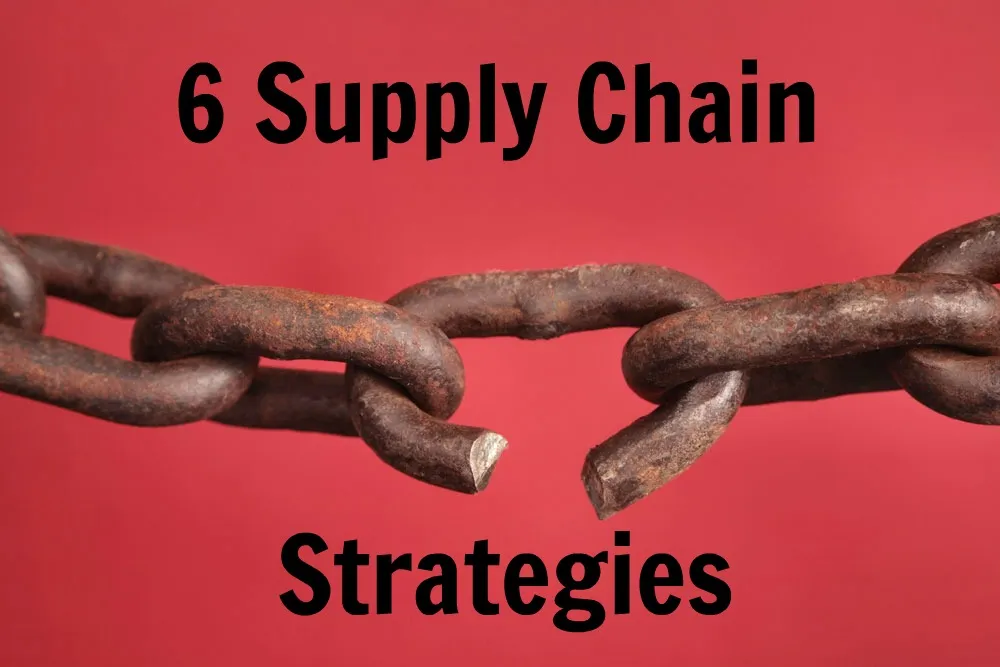 These tips will help businesses optimize and reduce unnecessary costs along their supply chain in order to build a more efficient model.
The supply chain is the network of independent but interconnected businesses and parties involved in producing, handling and distributing a product, from its genesis as raw materials from a supplier to its delivery to the customer. While many companies rightfully focus on improving customer service and investing in new acquisition methods, they often overlook their supply chain, the management of which is crucial to running an efficient and profitable business. Studies show that businesses with well-run, sophisticated supply chains reap 12 times the profits of those with unsophisticated methods.
These tips will help businesses optimize and reduce unnecessary costs along their supply chain in order to build a more efficient model.
The supply chain is the network of independent but interconnected businesses and parties involved in producing, handling and distributing a product, from its genesis as raw materials from a supplier to its delivery to the customer. While many companies rightfully focus on improving customer service and investing in new acquisition methods, they often overlook their supply chain, the management of which is crucial to running an efficient and profitable business. Studies show that businesses with well-run, sophisticated supply chains reap 12 times the profits of those with unsophisticated methods.
As the economy becomes an increasingly complex and global system,
supply chains have expanded from mostly internal functions under the supervision of each individual company to a multifaceted collaboration between distributors, suppliers and partners, all working together with a variety of new technologies such as mobile and cloud computing. In order to continue ensuring that your product ends up in the hands of your customers quickly, without losing quality, supply chain optimization is crucial.
What strategies can small business owners use to cut costs, not corners, along the supply chain? Here are six ideas:
1. Institute automated inventory control
Inventory control is the policies and systems used to purchase, ship, receive, store and otherwise maximize the efficiency of transporting your product from the start of the supply chain to the finish. Managing inventory is easier than ever thanks to barcode and RFID technology, but only a little over half of small businesses use an automated inventory management system.
Automated inventory control will help you maintain a balanced turnover ratio, ensuring you always have enough stock on hand to satisfy demand, without spending too much on holding costs for excess inventory that may deteriorate and become obsolete. It also eliminates auditing errors and protects inventory against employee or outsider theft, which is an unfortunate but real issue for almost every company.
2. Decide on a supply chain model that fits your business
No business is exactly alike, and to that end no supply chain is the same either. While many businesses prefer to run as responsively as possible, others require efficiency over all else. There are six generic supply chain models that fall into these two categories:
- Oriented to efficiency: Efficient (for businesses where competition is based mostly on price) fast (best when the products are trendy and have a short life-cycle) and continuous-flow (short shelf-life products that have consistent demand) supply chain models, which are used to produce things such as cement and steel, catalog sales and milk or bread.
- Oriented to responsiveness: Agile (for products that often have unique specifications for each customer), custom-configured (for personalized products in multiple configurations) and flexible (for meeting unexpected demand and staving off workload lulls) supply chain models, which are used to produce items for industrial customers, vehicles and computers and machining services.
Your business model and goals will dictate what model you need, and where to dedicate your investments so as not to waste liquid cash on what is essentially supply chain window dressing.
"Finding the peaks and valleys in your use of your assets will help you capitalize on the peaks, and diminish the valleys."
3. Integrate emerging technologies like mobile-based cloud computing
Cloud computing is the future of most business, and supply chain management is no exception. Giving all partners along the chain access to the same information (such as origin, item contents and special instructions) via devices like smartphones or mobile computers can help improve tracking, field sales, marketing, direct services to customers, logistics and more, since collaborative execution often solves issues much more quickly than disparate problem-solving. The cloud connects each point along the chain with each other, as well as your company with the customer.
4. Focus on core strengths and learn what can be outsourced
Some tasks are best left to specialized providers rather than in-house employees, as the 85% of businesses that outsource some part of the supply chain operations can attest. Figure out what tasks you can do yourself (for example: if you’re able to keep up, creating your own barcodes using either an industrial or desktop barcode printer is a way to eliminate bottlenecks along the supply chain) and what should be left up to third-parties in order to obtain a better value (i.e., determining distribution networks, warehousing, auditing, etc.). Allowing your employees to focus on the jobs they were hired to do, rather than adding on extraneous tasks, can help grow your business in the long run.

5. Better utilizing your assets
Fixed assets are the pieces of property purchased for long-term use and are utilized in the production of income, such as vehicles, equipment and buildings. Investing in fixed assets means you’ll want to use them as much and as efficiently as possible. Examine how your assets are being used, and you may find more cost-effective ways of executing your supply chain. For example, some companies realize that their schedule for delivery trucks should be altered, or that they rent too much warehouse space during low points in the season to justify the cost. Finding the peaks and valleys in your use of your assets will help you capitalize on the peaks, and diminish the valleys.
Another way to get the most out of your assets is to invest in asset tracking software. This will help eliminate lost or stolen assets, and can alert you when assets require maintenance or disposal as per your chosen depreciation method. This way, you won’t find yourself stuck with broken equipment when a demand surge requires more inventory sooner than expected.
6. Emphasize sustainability
Sustainability is more important than ever to customers, who often no longer turn a blind eye to the origins of their products and want to make sure they buy items that have a positive provenance. Not only will sustainability improve customer satisfaction, it leads to competitive advantages that will seriously impact the bottom line. Green or sustainable practices such as reducing carbon inefficiencies, minimizing energy consumption, using recycled, reused or refurbished materials and optimizing your transportation are just a few ways to save money while lessening your company’s impact on the environment.
Successful companies everywhere recognize the importance of a lean, efficient and cost-effective supply chain: Dell said the supply chain is “the biggest leverage point we have;" Zara, a Spanish clothing manufacturer and retailer, said “the supply chain is the business model;" Li & Fung said the “customer value lies in our ability to architect and operate supply chains.”
How would adopting these supply chain strategies change your business operations?

